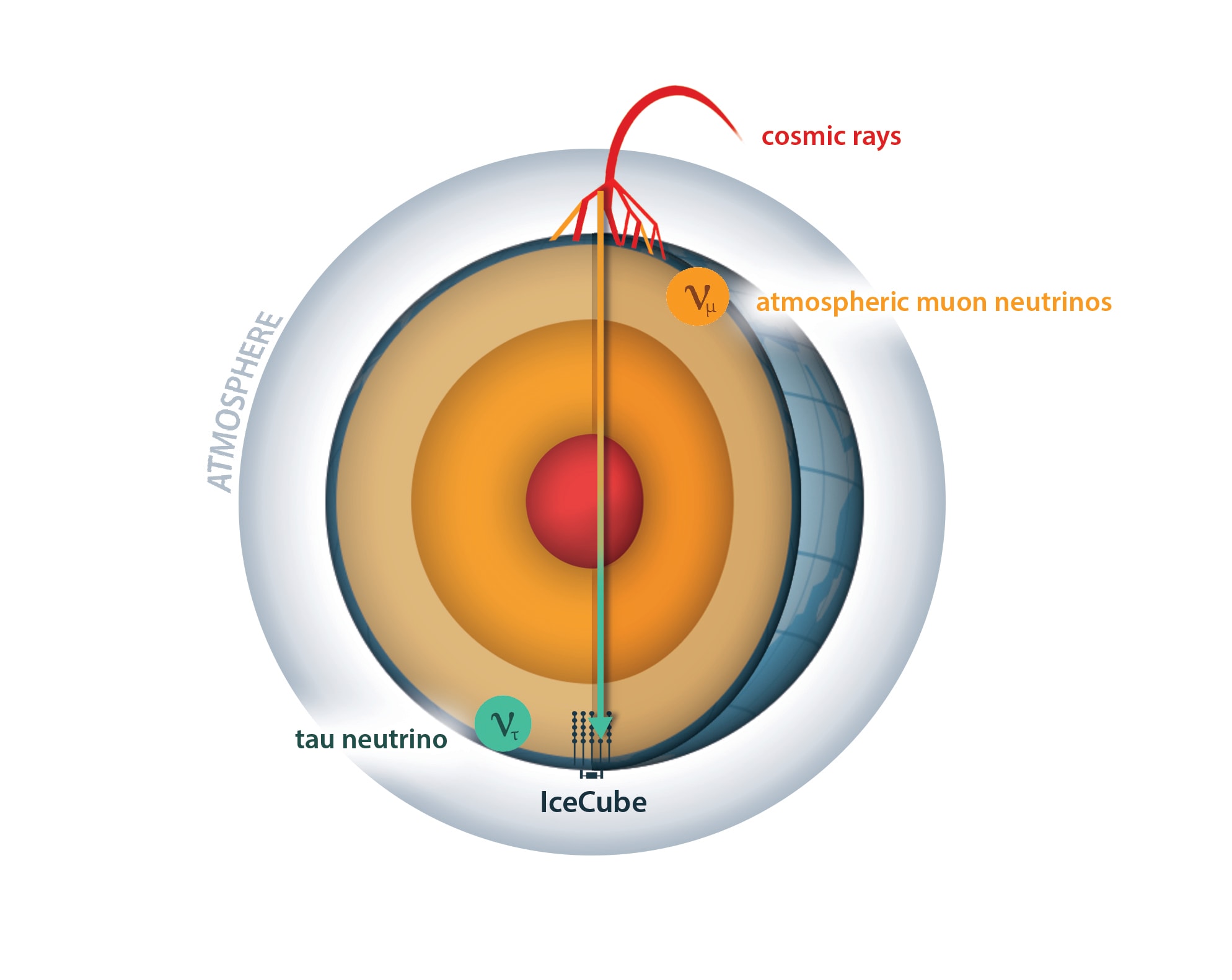Neutrinos have mass. Their mass is small, extremely small in fact, but contrary to what the Standard Model of particle physics predicts, they do have mass.
A consequence of this nonstandard property is that neutrinos oscillate, which means that as they speed through matter or space, their flavor—or type—changes at a rate that depends on their energy and the distance they have traveled.
Many physicists have speculated that the way neutrinos oscillate could be modified by new physics that lies beyond the Standard Model—in particular that they could also interact in new ways, among themselves or with matter as they travel.
Yet, new results by the IceCube Collaboration that have just been submitted to Physical Review Letters set the strongest constraints on any nonstandard neutrino oscillation parameter from any experiment to date.
The results place new restrictions on possible extensions of the Standard Model that may illuminate the nature of neutrino mass, the nature of dark matter, and other fundamental questions in particle physics. “The exciting part is that this is the tightest constraint in the world ever placed on any neutrino nonstandard interactions parameter,” explains Grant Parker, who led the analysis as a PhD student at the University of Texas at Arlington (UTA), and adds, “an accomplishment that is no small feat.”
The study used muons, resulting from neutrino interactions, with energies between 500 GeV and 10 TeV using eight years of IceCube data. These neutrinos are produced by the interaction of high-energy cosmic rays with atmospheric nuclei, and as they travel through Earth, from the north to the South Pole to reach IceCube sensors buried deep in the Antarctic ice, many will oscillate between muon and tau flavors.
The analysis looks for upgoing muon tracks, which are the result of a muon neutrino interaction. However, when the muon neutrino oscillates into a tau flavor, it will not produce this signature particle, thus resulting in a missing muon track.

“The nonstandard interaction we have constrained would modify neutrino oscillations by converting more muon neutrinos into tau neutrinos than expected, an effect that is especially visible in IceCube’s high-energy range. So what we are looking for is the effect of a muon neutrino disappearance within IceCube data,” says Ben Jones, an associate professor of physics at UTA who supervised the analysis.
It is like searching for a missing needle in a haystack. But, against all odds, the larger the “haystack,” the easier it could be to find a signal of nonstandard interactions. Eight years of data delivered a large sample of atmospheric neutrinos, over 300,000 events. The Earth provides an immense amount of matter for them to interact with. Plus, if nonstandard interactions are real, our chances of seeing them increase with energy. So, IceCube is serving us “the perfect recipe for probing new physics,” says Grant.
The fact that these nonstandard interactions were not found, and that their strength is strongly limited, already discards certain new physics models. But, if there is new physics, it might be visible at higher energy scales or caused by different nonstandard interactions, which tells us the next place to search for them.
The quest for nonstandard neutrino interactions is still on, and IceCube continues at the forefront of this search for beyond-the-standard-model physics. In fact, as you read this, a new search is already in the works, which is expected to constraint all nonstandard interaction parameters.
And the future looks promising for the neutrino physics community with improvements from the IceCube Upgrade project, more years of data, and new oscillation experiments. A discovery might be just around the corner and would elucidate if there is room for nonstandard neutrino interactions in more advanced models of neutrino physics.
+Info “Strong constraints on neutrino non-standard interactions from TeV-scale νμdisappearance at IceCube,” IceCube Collaboration: R. Abbasi et al., Physical Review Letters 129 (2022) 1, 1, journals.aps.org, arxiv.org/abs/2201.03566